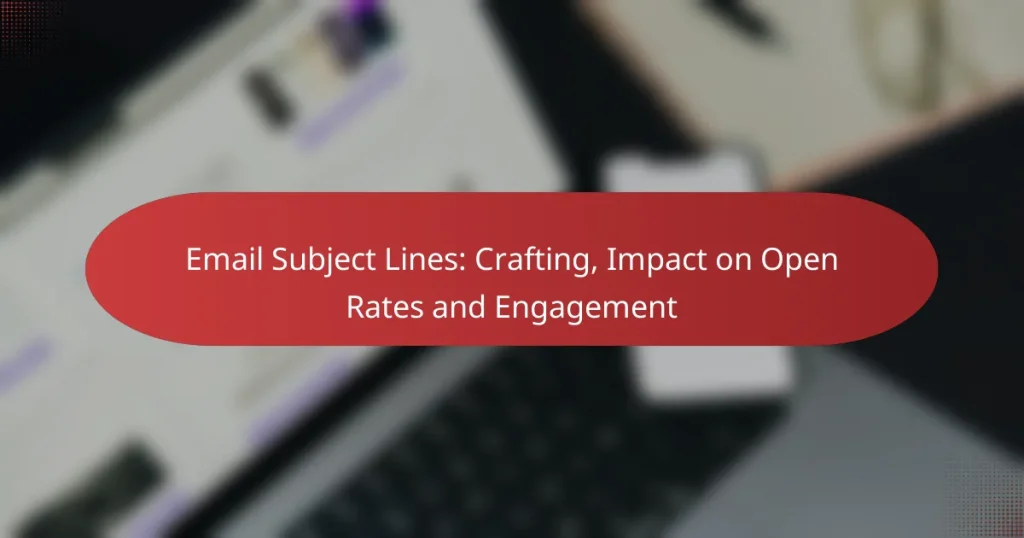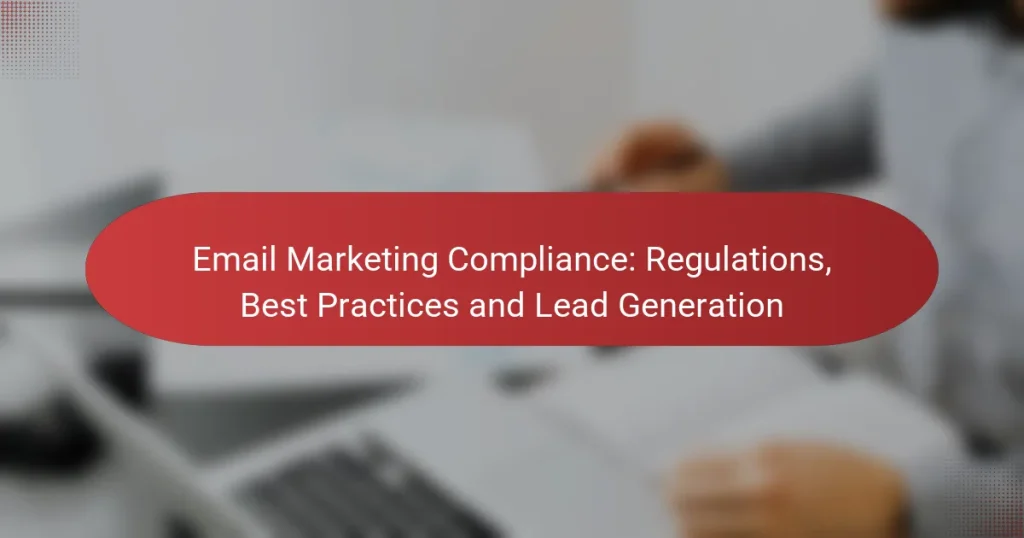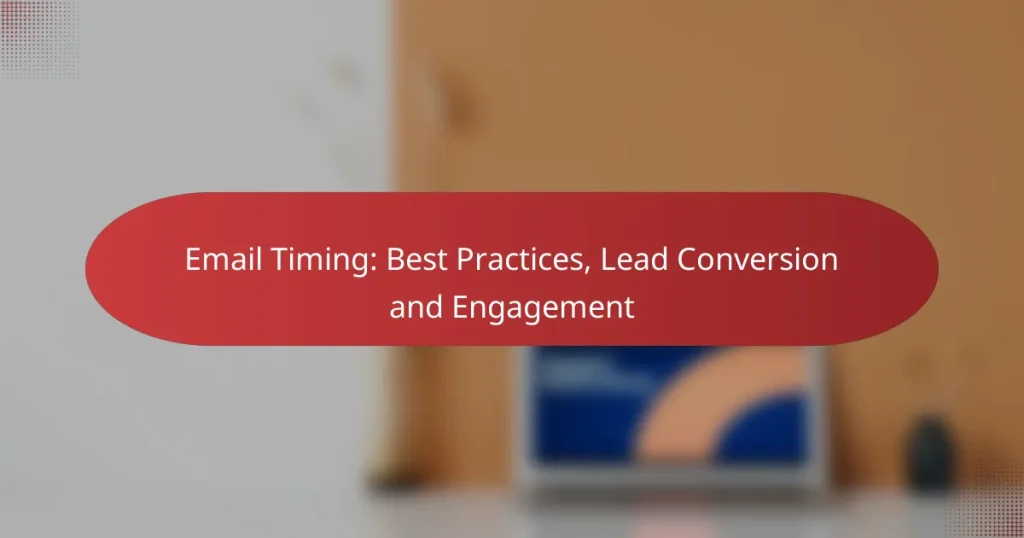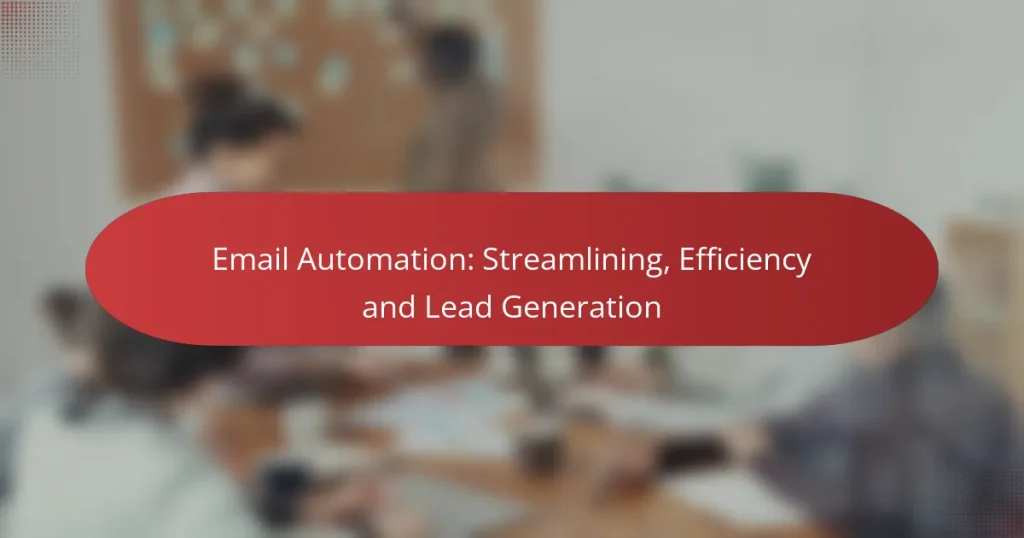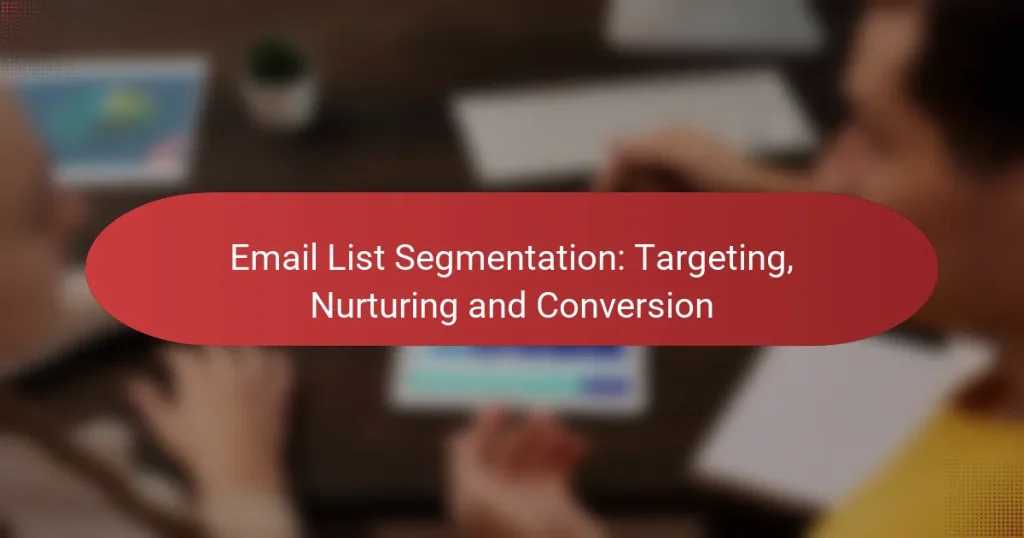Email marketing is a powerful tool for generating leads by delivering targeted messages directly to potential customers’ inboxes. By utilizing personalized content and automated follow-ups, businesses can effectively nurture relationships and convert prospects into valuable leads.
Email Marketing Compliance: Regulations, Best Practices and Lead Generation
Email Timing: Best Practices, Lead Conversion and Engagement
Email Campaign Metrics: Analysis, Improvement and Performance
Email Automation: Streamlining, Efficiency and Lead Generation
Email List Segmentation: Targeting, Nurturing and Conversion
Email Personalization: Techniques, Engagement and Customer Experience
How can email marketing generate leads in the USA?
Email marketing can effectively generate leads in the USA by reaching potential customers directly in their inboxes. By leveraging targeted campaigns, personalized content, and automated follow-ups, businesses can nurture relationships and convert prospects into leads.
Targeted email campaigns
Targeted email campaigns focus on specific audience segments, ensuring that the content resonates with recipients. By analyzing customer data, businesses can tailor their messages based on demographics, interests, or behaviors, which increases the likelihood of engagement.
For example, a retail company might send promotions for winter clothing to customers in colder regions while offering summer gear to those in warmer areas. This approach not only improves open rates but also enhances conversion potential.
Personalized content strategies
Personalized content strategies involve customizing email messages to meet the unique needs and preferences of each recipient. This can include using the recipient’s name, recommending products based on past purchases, or sending relevant articles based on their interests.
Utilizing dynamic content can significantly boost engagement rates. For instance, a fitness brand might send tailored workout tips to subscribers based on their fitness goals, making the communication feel more relevant and valuable.
Automated follow-up sequences
Automated follow-up sequences streamline the lead nurturing process by sending pre-scheduled emails based on user actions. For example, if a potential customer signs up for a newsletter but doesn’t make a purchase, an automated series can provide additional information or incentives to encourage conversion.
These sequences can be set up to trigger after specific events, such as cart abandonment or after a webinar, ensuring timely and relevant communication that keeps the brand top-of-mind.
Segmentation for better engagement
Segmentation involves dividing your email list into smaller groups based on shared characteristics, which allows for more targeted messaging. By segmenting your audience, you can send tailored content that speaks directly to the interests and needs of each group.
Common segmentation criteria include purchase history, engagement level, and geographic location. For instance, a software company might segment users into categories like trial users and long-term customers, providing each group with tailored content that addresses their specific stage in the customer journey.
What are the best practices for email marketing?
The best practices for email marketing focus on engaging your audience effectively while maximizing conversion rates. Key strategies include crafting compelling subject lines, optimizing for mobile devices, and utilizing A/B testing to refine your approach.
Crafting compelling subject lines
Compelling subject lines are crucial for increasing open rates. Aim for clarity and intrigue, keeping them under 50 characters to ensure they display well on all devices. Personalization, such as including the recipient’s name or relevant interests, can also enhance engagement.
Consider using action-oriented language and creating a sense of urgency. Phrases like “Limited Time Offer” or “Don’t Miss Out” can prompt immediate action. Avoid spammy words that may trigger filters, such as “Free” or “Guaranteed.”
Optimizing for mobile devices
With a significant portion of emails opened on mobile devices, optimizing your content for smaller screens is essential. Use responsive design to ensure your emails look good on any device, and keep your layout simple and easy to navigate.
Short paragraphs and clear calls to action are vital. Use larger fonts for readability and ensure buttons are easily clickable. Test your emails on various devices to confirm that formatting remains consistent across platforms.
Using A/B testing for improvement
A/B testing allows you to compare two versions of an email to determine which performs better. You can test subject lines, content layout, images, or calls to action to see what resonates most with your audience.
Start with small changes to isolate variables effectively. For example, if testing subject lines, keep the email content the same. Analyze the results to make data-driven decisions that enhance future campaigns, aiming for continuous improvement in your email marketing strategy.
Which tools enhance email marketing for lead generation?
Several tools can significantly enhance email marketing efforts for lead generation by automating processes, integrating customer relationship management (CRM), and enabling effective audience segmentation. Choosing the right tool depends on your specific needs, budget, and marketing strategy.
Mailchimp for automation
Mailchimp is a popular choice for automating email marketing campaigns. It allows users to set up automated workflows that can trigger emails based on user behavior, such as sign-ups or purchases. This feature helps maintain engagement with leads without requiring constant manual effort.
Consider using Mailchimp’s templates and scheduling options to streamline your campaigns. For instance, you can create a welcome series for new subscribers that sends a sequence of emails over several days or weeks, nurturing leads effectively.
HubSpot for CRM integration
HubSpot excels in integrating email marketing with CRM functionalities, making it easier to manage leads and track interactions. This integration allows for personalized email campaigns based on the lead’s stage in the sales funnel, enhancing the relevance of your messaging.
Utilizing HubSpot’s analytics tools can help you measure the effectiveness of your campaigns. You can track open rates, click-through rates, and conversion rates, allowing for data-driven adjustments to improve your lead generation efforts.
ActiveCampaign for segmentation
ActiveCampaign is known for its robust segmentation capabilities, enabling marketers to tailor their email content to specific audience groups. By segmenting your email list based on criteria such as demographics, behavior, or engagement levels, you can send more targeted and relevant messages.
To maximize the effectiveness of your campaigns, consider creating segments for different buyer personas or engagement levels. This approach can lead to higher open and conversion rates, as recipients receive content that resonates with their specific interests and needs.
What metrics should be tracked in email marketing?
Key metrics to track in email marketing include open rates, click-through rates, and conversion rates. These metrics provide insights into engagement, effectiveness, and return on investment, helping marketers refine their strategies.
Open rates for engagement
Open rates indicate the percentage of recipients who open an email, reflecting the effectiveness of subject lines and sender reputation. A typical open rate can range from 15% to 30%, depending on the industry and audience.
To improve open rates, consider A/B testing subject lines and sending emails at optimal times. Avoid spammy language and ensure your sender name is recognizable to enhance trust and increase engagement.
Click-through rates for effectiveness
Click-through rates (CTR) measure the percentage of recipients who click on links within an email, showcasing the effectiveness of your content and calls to action. A good CTR generally falls between 2% and 5%, but this can vary widely by sector.
To boost CTR, use clear and compelling calls to action, and segment your audience to tailor content to their interests. Including visually appealing buttons can also encourage more clicks compared to standard text links.
Conversion rates for ROI
Conversion rates track the percentage of recipients who take a desired action, such as making a purchase or signing up for a newsletter. This metric is crucial for assessing the return on investment (ROI) of your email campaigns.
To enhance conversion rates, ensure that your landing pages are optimized for mobile devices and align closely with the email content. Offering incentives, such as discounts or exclusive content, can also drive higher conversions.
What are common challenges in email marketing?
Email marketing faces several challenges that can hinder its effectiveness in lead generation. Key issues include deliverability problems, compliance with regulations, and maintaining subscriber interest.
Deliverability issues
Deliverability refers to the ability of your emails to reach the intended inboxes rather than being filtered into spam folders. Factors affecting deliverability include sender reputation, email content, and recipient engagement. Ensuring a good sender reputation involves maintaining low bounce rates and high open rates.
To improve deliverability, regularly clean your email list by removing inactive subscribers and using double opt-in methods. Monitoring your email metrics can help identify issues early, allowing you to adjust your strategy accordingly.
Compliance with regulations
Email marketers must comply with various regulations, such as the General Data Protection Regulation (GDPR) in Europe and the CAN-SPAM Act in the United States. These laws require clear consent from subscribers before sending marketing emails and mandate options for easy unsubscribing.
To ensure compliance, always include a visible unsubscribe link in your emails and provide a privacy policy outlining how subscriber data will be used. Familiarizing yourself with local regulations can help avoid legal pitfalls and maintain trust with your audience.
Maintaining subscriber interest
Keeping subscribers engaged is crucial for the success of email marketing campaigns. Over time, audiences may lose interest due to repetitive content or lack of personalization. To combat this, segment your email list based on subscriber behavior and preferences to tailor your messages.
Regularly refresh your content strategy by incorporating interactive elements, exclusive offers, or valuable resources. A/B testing different subject lines and email formats can also help identify what resonates best with your audience, ensuring higher engagement rates.
How to choose the right email marketing platform?
Choosing the right email marketing platform involves evaluating features, pricing, and ease of use. Consider your business needs, such as automation capabilities, analytics, and integration with other tools.
Evaluate your business needs
Start by identifying what you want to achieve with email marketing. Are you focusing on lead generation, customer retention, or both? Understanding your goals will help you select a platform that aligns with your objectives.
For instance, if your primary aim is lead generation, look for platforms that offer robust segmentation and targeting features. This allows you to tailor your messages to specific audience segments, increasing engagement and conversion rates.
Compare features and pricing
Different platforms offer varying features, so it’s essential to compare them based on your requirements. Look for functionalities like automation, A/B testing, and analytics.
Pricing models can vary significantly. Some platforms charge based on the number of subscribers, while others may have flat fees or usage-based pricing. Aim for a solution that provides the best value for your budget, typically ranging from $10 to $300 per month depending on the features and subscriber count.
Consider ease of use
The user interface and overall usability of the platform are crucial for efficient email marketing. A complicated system can slow down your campaigns and lead to mistakes.
Look for platforms that offer intuitive dashboards and drag-and-drop editors. Many providers offer free trials, so take advantage of these to test the interface before committing.
Check for integrations
Ensure the email marketing platform integrates seamlessly with your existing tools, such as CRM systems, e-commerce platforms, and social media. This can streamline your workflows and enhance data accuracy.
Popular integrations include Salesforce, Shopify, and WordPress. Confirm that the platform you choose supports the tools you already use to avoid disruptions in your marketing efforts.
